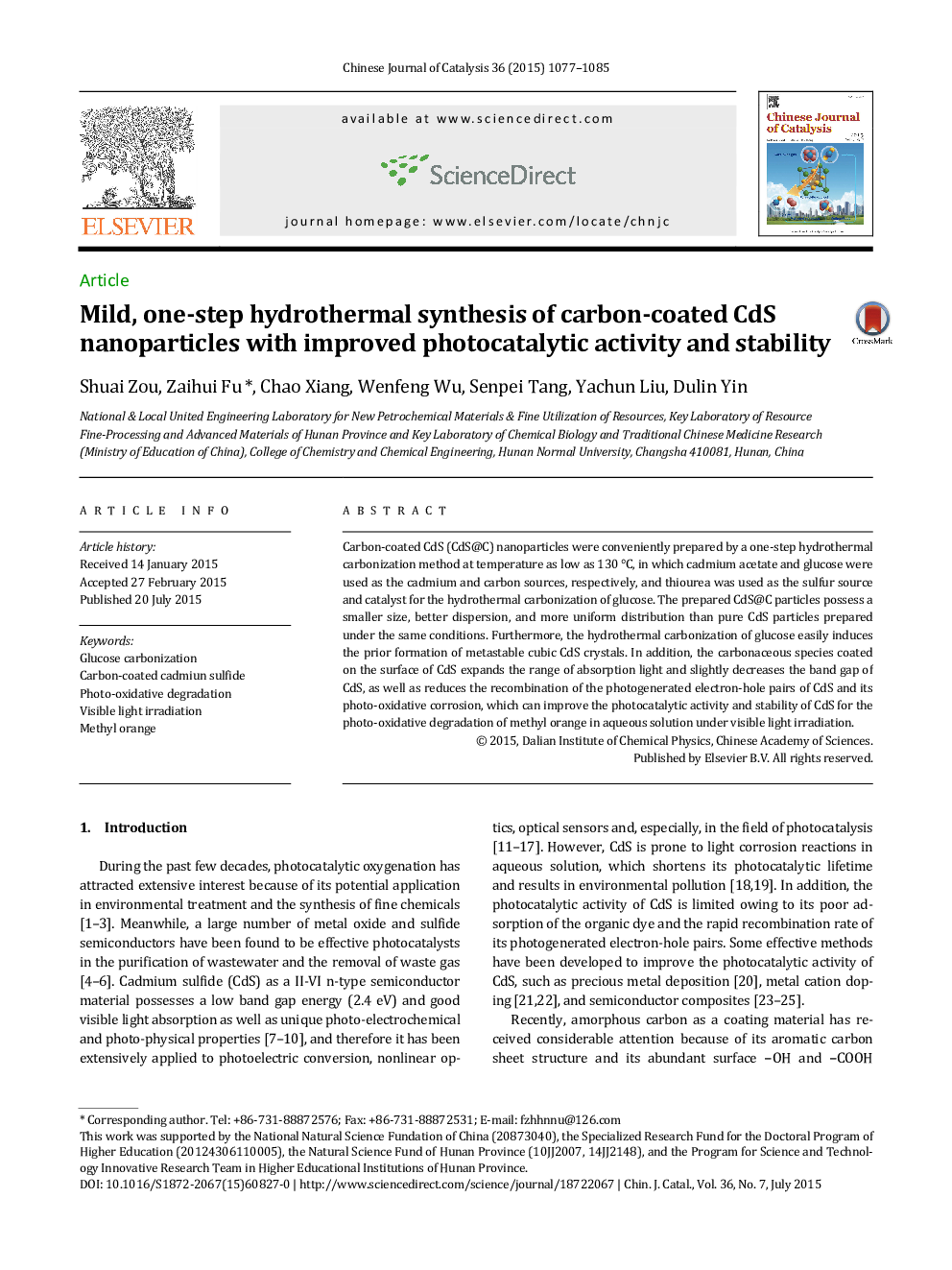| Article ID | Journal | Published Year | Pages | File Type |
|---|---|---|---|---|
| 58959 | Chinese Journal of Catalysis | 2015 | 9 Pages |
Carbon-coated CdS (CdS@C) nanoparticles were conveniently prepared by a one-step hydrothermal carbonization method at temperature as low as 130 °C, in which cadmium acetate and glucose were used as the cadmium and carbon sources, respectively, and thiourea was used as the sulfur source and catalyst for the hydrothermal carbonization of glucose. The prepared CdS@C particles possess a smaller size, better dispersion, and more uniform distribution than pure CdS particles prepared under the same conditions. Furthermore, the hydrothermal carbonization of glucose easily induces the prior formation of metastable cubic CdS crystals. In addition, the carbonaceous species coated on the surface of CdS expands the range of absorption light and slightly decreases the band gap of CdS, as well as reduces the recombination of the photogenerated electron-hole pairs of CdS and its photo-oxidative corrosion, which can improve the photocatalytic activity and stability of CdS for the photo-oxidative degradation of methyl orange in aqueous solution under visible light irradiation.
Graphical AbstractThis paper describes carbon-coated CdS (CdS@C) nanoparticles, prepared via a convenient one-step hydrothermal carbonization method, that exhibit enhanced photocatalytic activity and stability for visible light-triggered oxidative degradation of methyl orange in aqueous solution.Figure optionsDownload full-size imageDownload as PowerPoint slide
